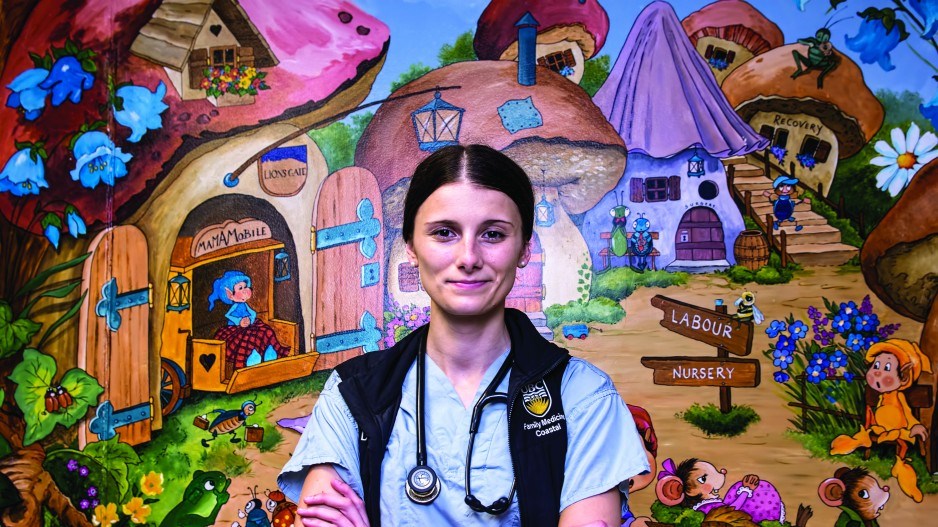In May, Premier John Horgan admitted that B.C. has a family doctor “crisis.”
An estimated one-fifth of British Columbians do not have a family doctor. A wave of retirements is one of the reasons.
But when you consider what it takes to become a family doctor, and balance that against what they earn and the cost of running a family practice, it’s not surprising that fewer medical school students are choosing to go into family medicine.
Becoming a doctor means spending 10 to 11 years in school and residency and accumulating $200,000 to $300,000 in student debt.
First, an undergraduate degree is typically needed (usually four years), followed by four years of medical school. Those planning to go into family medicine then need to spend two years in residency, where they are paid $57,000 in the first year in B.C. and $63,000 in the second year.
“Residents do get paid, but they don’t get paid much,” said David May, a family doctor and president of the BC College of Family Physicians. “They’re not going to be able to make a hole in their debt when they’re a resident.”
It’s hard to even get into medical school in the first place. On average, only 5.5 per cent of applicants get into medical school in Canada each year. The University of British Columbia’s (UBC) Faculty of Medicine – the only medical school in B.C. – had an acceptance rate of 11.3 per cent in 2021. Of the 2,558 students that applied, only 288 were admitted.
Canada has 17 medical schools. The country’s medical school tuition is generally lower than it is in the U.S. And in the United Kingdom, doctors spend more time in medical school and residency than Canadians do. Even so, despite the comparatively lower tuition and shorter schooling and residency requirements, Canada appears to be turning out fewer and fewer doctors.
The Canadian Medical Association Journal noted in 2018 that, while enrolments in U.S. medical school had risen steadily over a 10-year period, enrolments in Canada had remained flat.
Tuition and other costs at UBC for four years of medical school total about $91,000.
“The average medical student now is graduating with somewhere between $200,000 and $300,000 of debt,” May said.
He added that residency can be the hardest part of becoming a doctor, because of the time commitment. May estimated that he frequently logged 100 hours per week in residence.
If medical school students pass Part 1 of the Medical Council of Canada Qualifying Examination in their final year of medical school and Part 2 after their first year of residency, they become licensed by the Medical Council of Canada. To go into private practice, they must apply to their provincial college of physicians and surgeons. The main difference between a general practitioner and a family doctor is that a family doctor is generally self-employed.
Family doctors have staff, rent and utilities to pay and must do a lot of administrative work that takes time away from seeing patients. And despite spending eight years in university, they are not taught how to run a business.
A growing number of medical school graduates are therefore opting for contract work with hospitals or urgent care clinics.
“They don’t want to have this debt and go into more debt trying to start a business, especially when most of them have never received any training at all on how to run a small business,” said Eric Cadesky, a family physician.
“Most people want to pay down that money as quickly as possible, so many don’t want to work in the fee-for-service system. That’s why some of the younger doctors are gravitating towards contracts.”
According to the College of Family Physicians of Canada: “Fewer medical school graduates are choosing the specialty of family medicine after witnessing the rising expectations placed on family practices without appropriate resources and the resulting physician burnout. With insufficient administrative support and stagnant payment models, the costs to maintain a family practice are becoming unsustainable.”
Average pay for a family doctor is about $260,000, May said. Overhead costs of running a private practice are about 35 per cent. That leaves an income of approximately $168,000.
“Yes, $168,000 is a lot of money, but you’re trying to pay off that debt and have a life as well,” May said. “I’m on call 24-7 for my patients. I was called at two this morning about an in-patient in the hospital. It’s that work-life balance and the financial realities that hit home. They choose an easier option, and it’s hard to blame them.”
He added that when all the overhead costs of running a family practice are factored in, physicians working at an urgent care clinic or an online service like Babylon can make twice as much as a family doctor.
“The overhead has just gone through the roof, whereas the fees for a standard visit for a family doctor have gone up seven per cent in the last 12 years.”
Last week, to address recruitment challenges, the B.C. government offered incentives to medical school graduates aimed at attracting them to family medicine.
The incentives include a $25,000 signing bonus, debt forgiveness and two-year contracts, starting at $295,457 for the first year.




